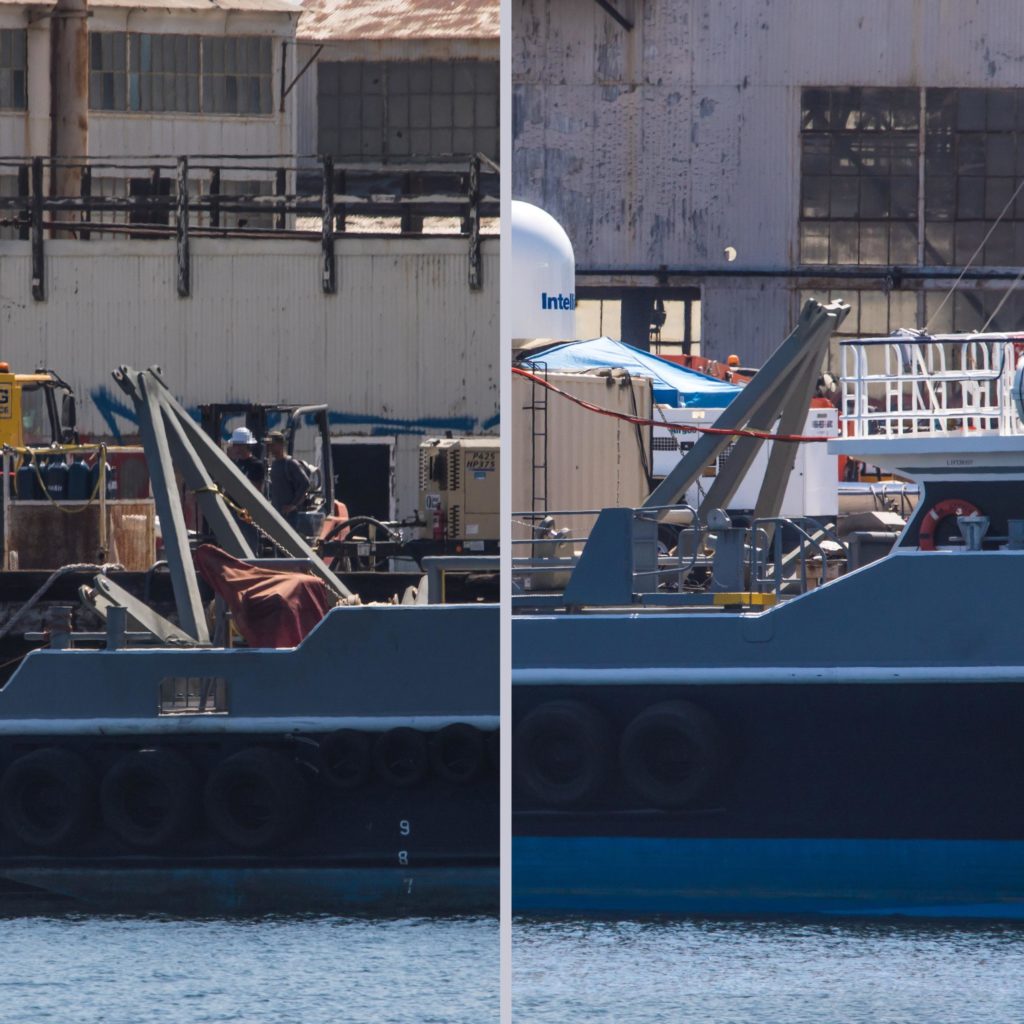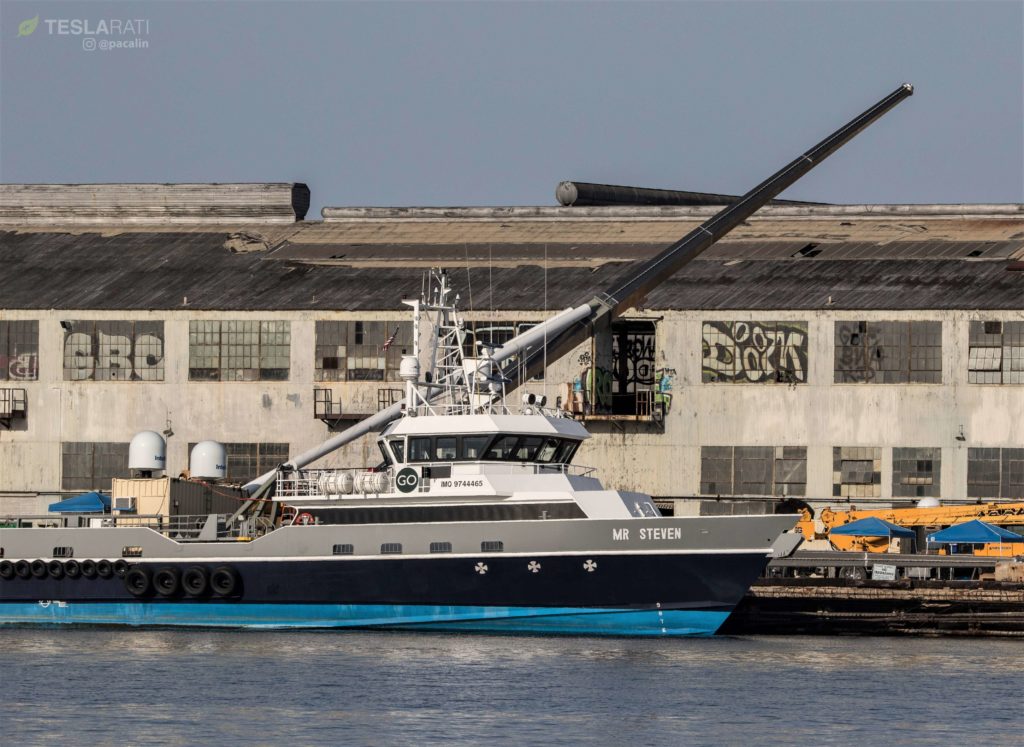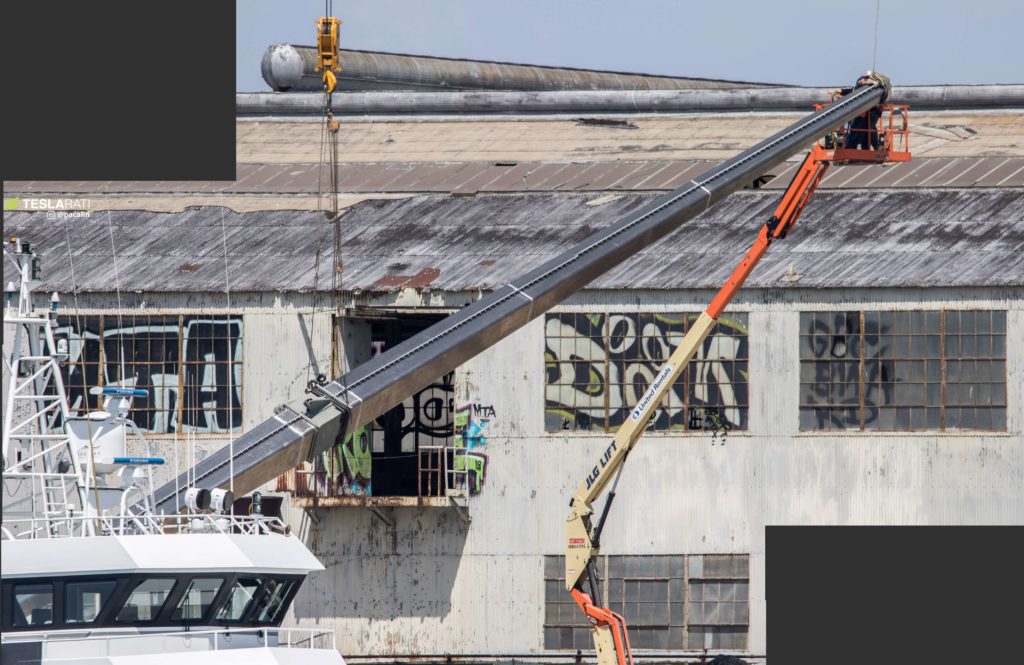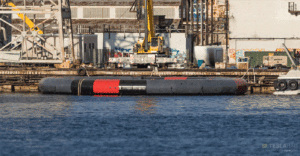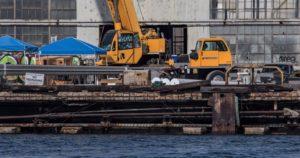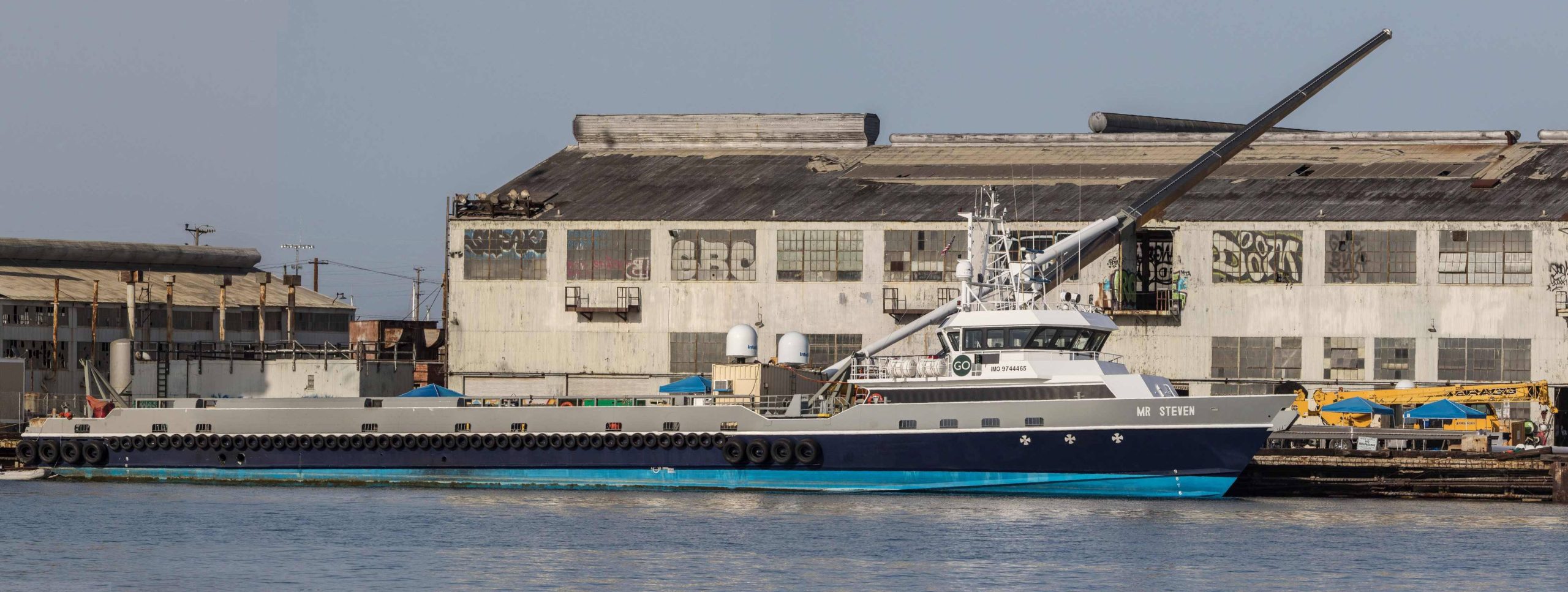
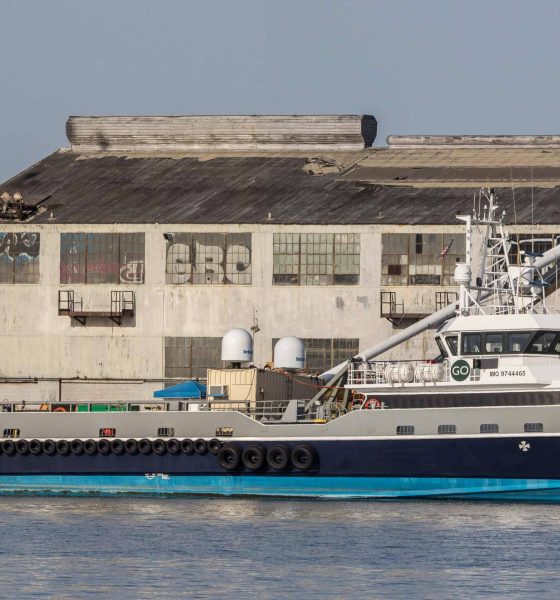
News
SpaceX’s Mr Steven gains upgraded arms to catch its first Falcon 9 fairings
SpaceX’s iconic Falcon 9 payload fairing recovery ship, known as Mr Steven, has been spotted in California’s Port of San Pedro having new arms installed with two cranes and a crew of SpaceX technicians. Aside from the sudden addition of dramatically different arm design, a large inflatable structure also took shape – seemingly overnight – right behind Mr Steven, the purpose of which is entirely unclear.
Incredibly, these massive new arms and their new equally large support struts and base plates have begun installation barely two weeks after Mr Steven took roost and had his old arms removed at SpaceX’s Berth 240 property. While the timeline of the arm and net upgrades – mentioned by CEO Elon Musk several weeks ago – was previously uncertain, the incredibly quick turnaround from old arm removal to new arm install suggests that SpaceX may, in fact, be aiming to have Mr Steven ready for recovery operations as early as Iridium-7, scheduled for launch on July 20th. In all likelihood, the fairing recovery vessel will be held up till the subsequent Vandenberg Air Force Base launch while a net with an area perhaps four times larger is custom-built for SpaceX.

A massive inflatable structure appeared out of nowhere at Berth 240 roughly four days after Teslarati photographer Pauline Acalin had last checked up on the facility. (Pauline Acalin)
Nevertheless, SpaceX’s speed rarely fails to surprise, and it’s entirely possible that a new, larger net was already ordered some time ago in preparation for the eventuality that Mr Steven’s first recovery mechanism was unsuccessful. Given the fact that at least two main arms and perhaps eight white, cylindrical struts have apparently been completed and are awaiting installation at Berth 240, it’s probable that the lead time on this new recovery mechanism stretches back at least several months, likely at least a month before Musk mentioned that Mr Steven would have its usable catching area grown “by a factor of [four]” in early June.
Yup, we are extending the net area by a factor of 4
— Elon Musk (@elonmusk) June 5, 2018
Closing the fairing recovery gap
With four times the net available to catch wayward Falcon 9 payload fairings, SpaceX may be able to finally close the gap between Mr Steven and the successful and routine recovery and reuse of the second of three main Falcon 9 (and Heavy) components. At roughly 10% of the total cost (not price) of a single-booster Falcon 9, the considerable effort being put into the recovery of carbon-composite payload fairings is in a way motivated more by manufacturing bottlenecks than by the money it will save SpaceX (somewhat less than $3m per half).
- Taken on Friday, these two photos show the new arm mounting brackets, installed on Mr Steven the week of July 2nd. (Pauline Acalin)
- Scarcely 48 hours later, an entirely new pear-shaped arm and two huge, circular struts were successfully installed, presumably the first of four sets. (Pauline Acalin)
- (Pauline Acalin)
SpaceX’s team of composite technicians and engineers will need to reliably fabricate as many as ~50 payload fairing halves in 2018, effectively one half each week
By recovering payload fairings before they touch the ocean surface, the company may – in one fell swoop – be able to dramatically reduce the operational expenditure required to sustain the annual production of dozens of Falcon fairings, each of which requires an inescapable and tediously slow stint in a massive autoclave, only a few of which can be squeeze into the company’s Hawthorne factory. As an example, SpaceX’s team of roughly 150 dedicated composite technicians and engineers will need to reliably fabricate as many as ~50 payload fairing halves – nearly a full half each week – to sustain SpaceX’s anticipated 2018 manifest of 24-28 launches, excluding three Cargo Dragon resupply missions that don’t need fairings.
While both Crew and Cargo Dragon spacecraft and trunks contain a large proportion of carbon fiber-composite structures, every composite Falcon 9 interstage that rolled off of the assembly line since February 2018 is part of a Block 5 booster and is thus expected to support a bare minimum of several missions on its own, functionally multiplying the useful output of any given production line even while the amount of work (and thus work-hours) is reduced. While Falcon 9 boosters – making up roughly 70% of the cost of the entire rocket – have been successfully upgraded to support several reuses each, SpaceX still has to produce a new payload fairing and upper stage for each launch. A spectacular Block 4 farewell earlier this month – complete with a recoverable booster expended to make way for Block 5 – simply served to emphasize the company’s desire to mitigate the expandability of both (currently) unreusable segments of Falcon 9.
- Meanwhile, the purpose of this massive inflatable ring is almost entirely unclear, as it would appear to be redundant with the initial installation of Mr Steven’s new recovery mechanism. (Pauline Acalin)
- Arm installation will presumably continue over the course of the week, hopefully reaching completion in time to recovery Iridium-7’s payload fairing. (Pauline Acalin)
If Mr Steven can recover even a small fraction – say 25% – of SpaceX payload fairings launched annually, the exact same level of effort (and thus capital) could support 25% more launches annually or reduce the work hours spent on fairing production by 25%. As it happens, SpaceX’s next-generation rocket (BFR) happens to be built (theoretically) almost entirely out of carbon-composites, from the propellant tanks to the spaceship’s delta wing.
Originally meant to focus on the wholly unexpected appearance of a giant inflatable structure at Berth 240, SpaceX’s breakneck pace of action abruptly recentered it on the equally unexpected installation of one the vessel’s first upgraded arms, meant to support a net that could be as much as four times larger than its predecessor. That symbolism on its own is a worthy representation of some of the best aspects of SpaceX’s world-class team of engineers and technicians, acting as a slightly more on-topic corollary to the equally rapid design, prototyping, fabrication, and testing of ad-hoc ‘submarines’ intended to help a number of Thai children currently trapped in a cave near the country’s border with Myanmar/Burma.

Mr Steven shows off the first of four new arms as a mysterious inflatable ring patiently sits astern. (Pauline Acalin)
Follow us for live updates, peeks behind the scenes, and photos from Teslarati’s East and West Coast photographers.
Teslarati – Instagram – Twitter
Tom Cross – Twitter
Pauline Acalin – Twitter
Eric Ralph – Twitter

News
Tesla FSD V14.2 starts rolling out to initial batch of vehicles
It would likely only be a matter of time before FSD V14.2 videos are posted and shared on social media.
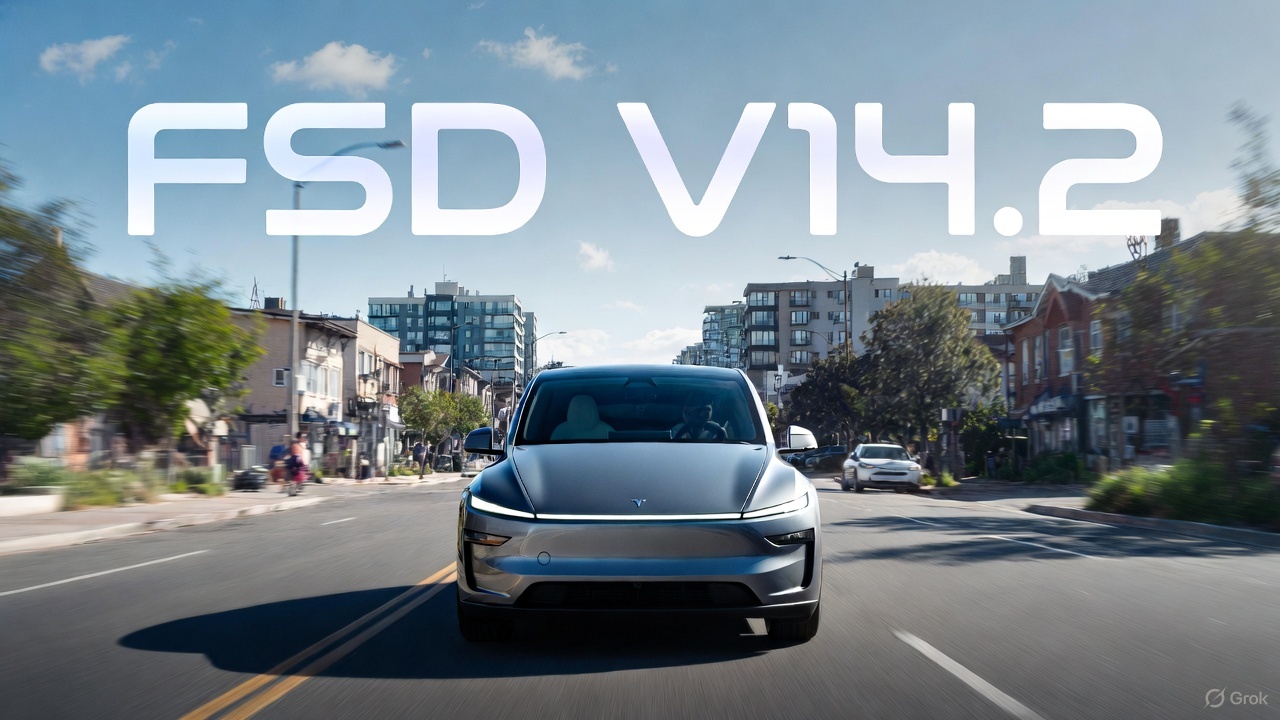
Tesla has begun pushing Full Self-Driving (Supervised) v14.2 to its initial batch of vehicles. The update was initially observed by Tesla owners and veteran FSD users on social media platform X on Friday.
So far, reports of the update have been shared by Model Y owners in California whose vehicles are equipped with the company’s AI4 hardware, though it would not be surprising if more Tesla owners across the country receive the update as well.
Based on the release notes of the update, key improvements in FSD V14.2 include a revamped neural network for better detection of emergency vehicles, obstacles, and human gestures, as well as options to select arrival spots.
It would likely only be a matter of time before FSD V14.2 videos are posted and shared on social media.
Following are the release notes of FSD (Supervised) V14.2, as shared on X by longtime FSD tester Whole Mars Catalog.
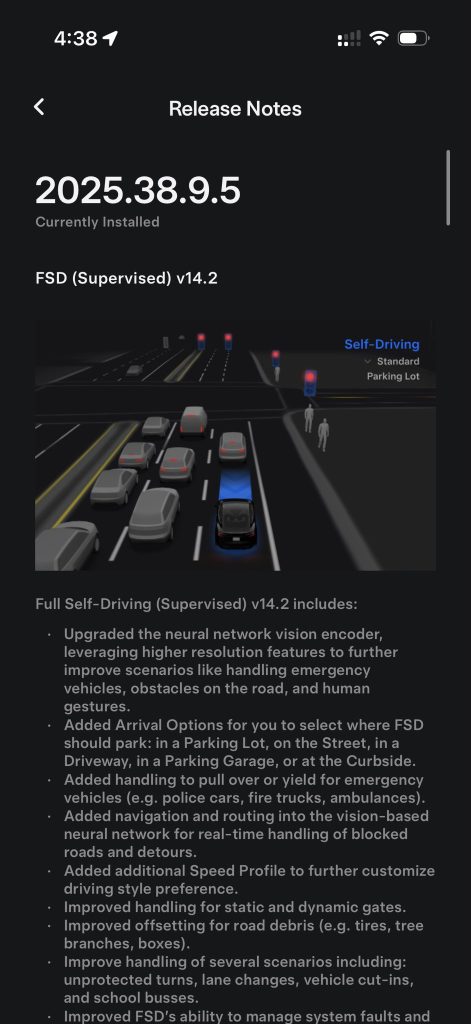
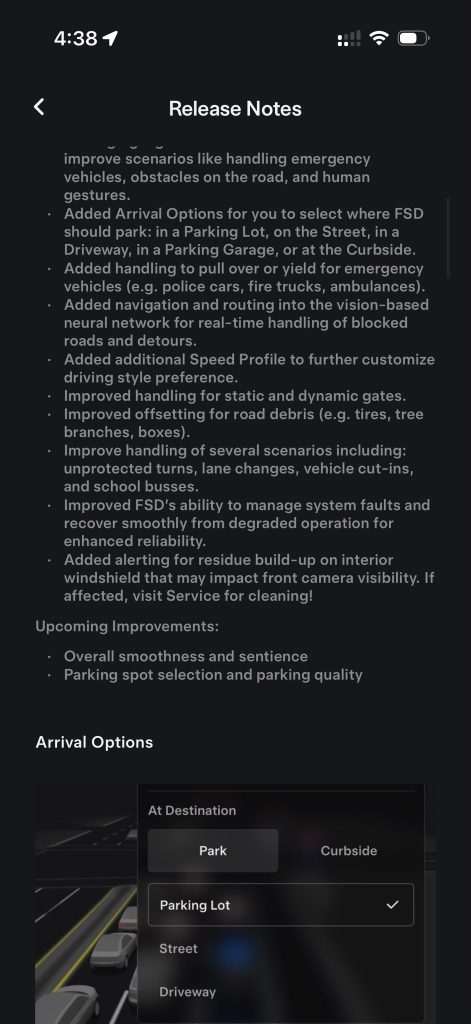
Release Notes
2025.38.9.5
Currently Installed
FSD (Supervised) v14.2
Full Self-Driving (Supervised) v14.2 includes:
- Upgraded the neural network vision encoder, leveraging higher resolution features to further improve scenarios like handling emergency vehicles, obstacles on the road, and human gestures.
- Added Arrival Options for you to select where FSD should park: in a Parking Lot, on the Street, in a Driveway, in a Parking Garage, or at the Curbside.
- Added handling to pull over or yield for emergency vehicles (e.g. police cars, fire trucks, ambulances.
- Added navigation and routing into the vision-based neural network for real-time handling of blocked roads and detours.
- Added additional Speed Profile to further customize driving style preference.
- Improved handling for static and dynamic gates.
- Improved offsetting for road debris (e.g. tires, tree branches, boxes).
- Improve handling of several scenarios including: unprotected turns, lane changes, vehicle cut-ins, and school busses.
- Improved FSD’s ability to manage system faults and improve scenarios like handling emergency vehicles, obstacles on the road, and human gestures.
- Added Arrival Options for you to select where FSD should park: in a Parking Lot, on the Street, in a Driveway, in a Parking Garage, or at the Curbside.
- Added handling to pull over or yield for emergency vehicles (e.g. police cars, fire trucks, ambulances).
- Added navigation and routing into the vision-based neural network for real-time handling of blocked roads and detours.
- Added additional Speed Profile to further customize driving style preference.
- Improved handling for static and dynamic gates.
- Improved offsetting for road debris (e.g. tires, tree branches, boxes).
- Improve handling of several scenarios, including unprotected turns, lane changes, vehicle cut-ins, and school buses.
- Improved FSD’s ability to manage system faults and recover smoothly from degraded operation for enhanced reliability.
- Added alerting for residue build-up on interior windshield that may impact front camera visibility. If affected, visit Service for cleaning!
Upcoming Improvements:
- Overall smoothness and sentience
- Parking spot selection and parking quality
News
Tesla Model X lost 400 pounds thanks to these changes
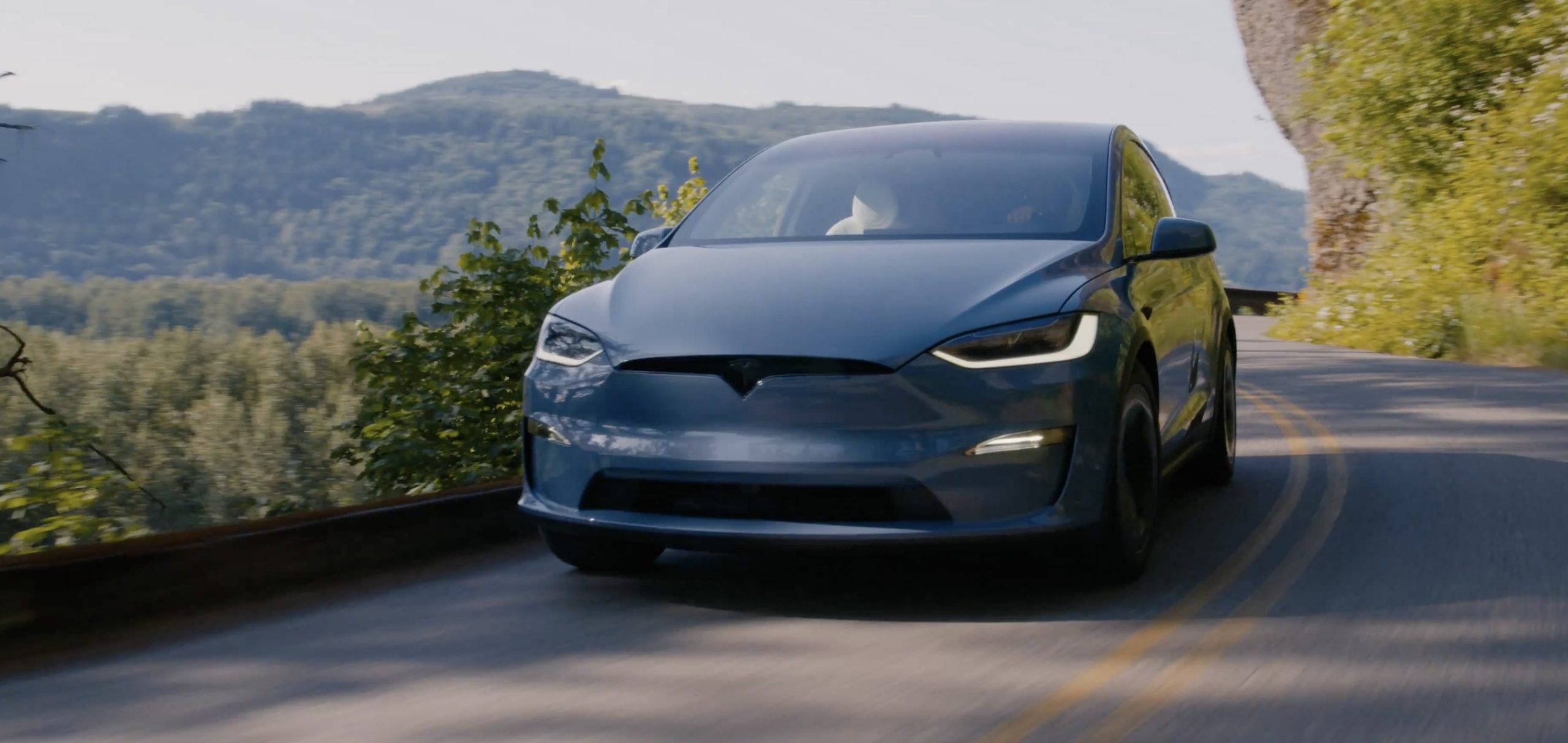
The Tesla Model X has always been one of the company’s most loved vehicles, despite its low sales figures, which can be attributed to its high price tag.
However, the Model X has been a signature item on Tesla’s menu of cars, most notably recognized by its Falcon Wing Doors, which are aware of its surroundings and open according to what’s around it.
But recent improvements to the Model X were looking slim to none, but it appears most of the fixes actually happened under the body, at least according to Tesla’s Vice President of Powertrain, Lars Moravy.
In a recent interview with Car and Driver, Moravy detailed all of the changes to the 2026 iteration of the vehicle, which was about 400 pounds lighter than it was originally. The biggest change is a modification with the rear motor, switching from an induction-type motor to a permanent-magnet design and optimizing the half-shafts, which shed about 100 pounds.
Tesla also got “almost 80 pounds out of the interior bits and pieces,” which “included making parts thinner, different manufacturing process choices, and incorporating airbag-deployment requirements into the headliner fabric,” the report said.
Additionally, the standard five-passenger, bench seat configuration saved 50 pounds by ditching pedestal mounting. This also helped with practicality, as it helped the seat fold flat. Engineers at Tesla also saved 44 pounds from the high-voltage wiring through optimizing the wiring from the charge-port DC/DC converter and switching from copper to aluminum wiring.
Tesla makes a decision on the future of its flagship Model S and Model X
Tesla also simplified the cooling system by reducing the number of radiators. It also incorporated Nürburgring cooling requirements for the Plaid variant, which saved nearly 30 pounds.
Many Tesla fans will be familiar with the megacastings, manufactured in-house by presses from IDRA, which also saves more than 20 pounds and boosts torsional stiffness by around 10 percent. Tweaks to the suspension also saved 10 pounds.
People were truly disappointed with what Tesla did with the Model S and Model X, arguing that the cars needed a more severe exterior overhaul, which might be true. However, Tesla really did a lot to reduce the weight of the vehicle, which helps increase range and efficiency. According to Grok, every 200 pounds removed adds between 7 and 15 percent to range estimations.
This makes sense considering the range estimations both increased by 7 percent from the Model X’s 2025 configuration to the 2026 builds. Range increased on the All-Wheel-Drive trim from 329 miles to 352 miles, while the Plaid went from 314 miles to 335 miles.
News
Tesla launches its new branded Supercharger for Business with first active station
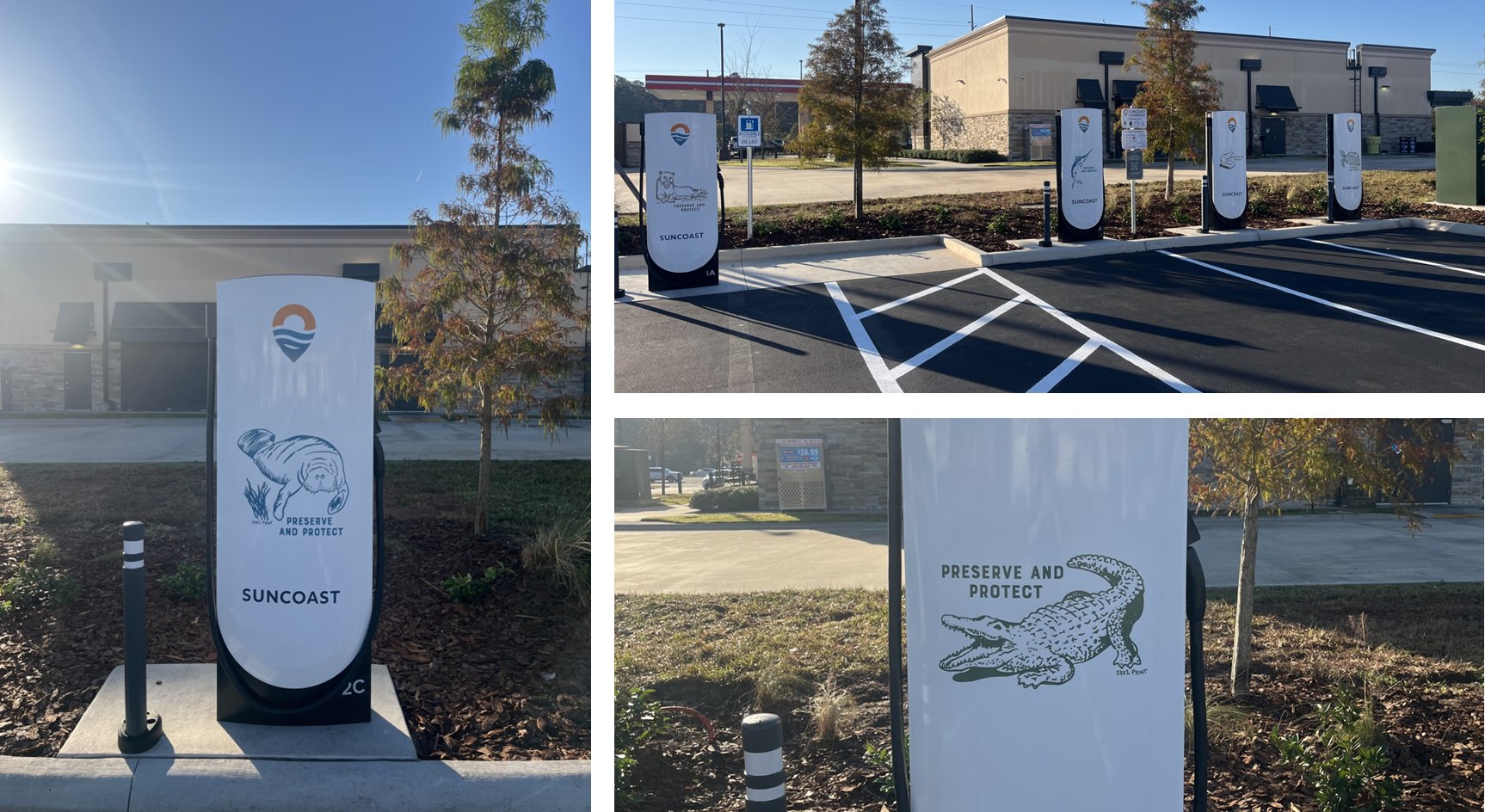
Tesla has officially launched its first branded Supercharger just months after initiating a new program that allows third-party companies to brand their own charging piles.
The site opened in Land O’ Lakes, Florida, and features eight V4 Supercharging stalls offering up to 325 kW of charging speed. It appears it was purchased by a company called Suncoast Credit Union. This particular branch is located Northeast of Tampa, which is on the Gulf of Mexico.
It features graphics of Florida animals, like alligators:
Here’s a video of the graphics being installed on the Tesla Superchargers at this site: https://t.co/oIfEPNZjAH pic.twitter.com/ENWakZ2qT9
— TESLARATI (@Teslarati) November 20, 2025
Tesla launched this program back in September, and it basically was a way to expand its Supercharger presence and also allow companies to pay for the infrastructure. Tesla maintains it. When it announced the “Supercharger for Business,” it said:
“Purchase and install Superchargers at your business. Superchargers are compatible with all electric vehicles, bringing EV drivers to your business by offering convenient, reliable charging.”
The program does a few things. Initially, it expands EV charging infrastructure and makes charging solutions more readily available for drivers. It can also attract people to those businesses specifically.
Tesla launches new Supercharger program that business owners will love
The chargers can also be branded with any logo that the business chooses, which makes them more personalized and also acts as an advertisement.
The best part is that the customers do not have to maintain anything about the Supercharger. Tesla still takes care of it and resolves any issues:
“We treat your site like we treat our sites. By providing you with a full-service package that includes network operations, preventative maintenance, and driver support, we’re able to guarantee 97% uptime–the highest in the industry.”
It appears the Superchargers will also appear within the in-car nav during routing, so they’ll be publicly available to anyone who needs to use them. They are still available to all EVs that have worked with Tesla to utilize its infrastructure, and they are not restricted to people who are only visiting the business.
